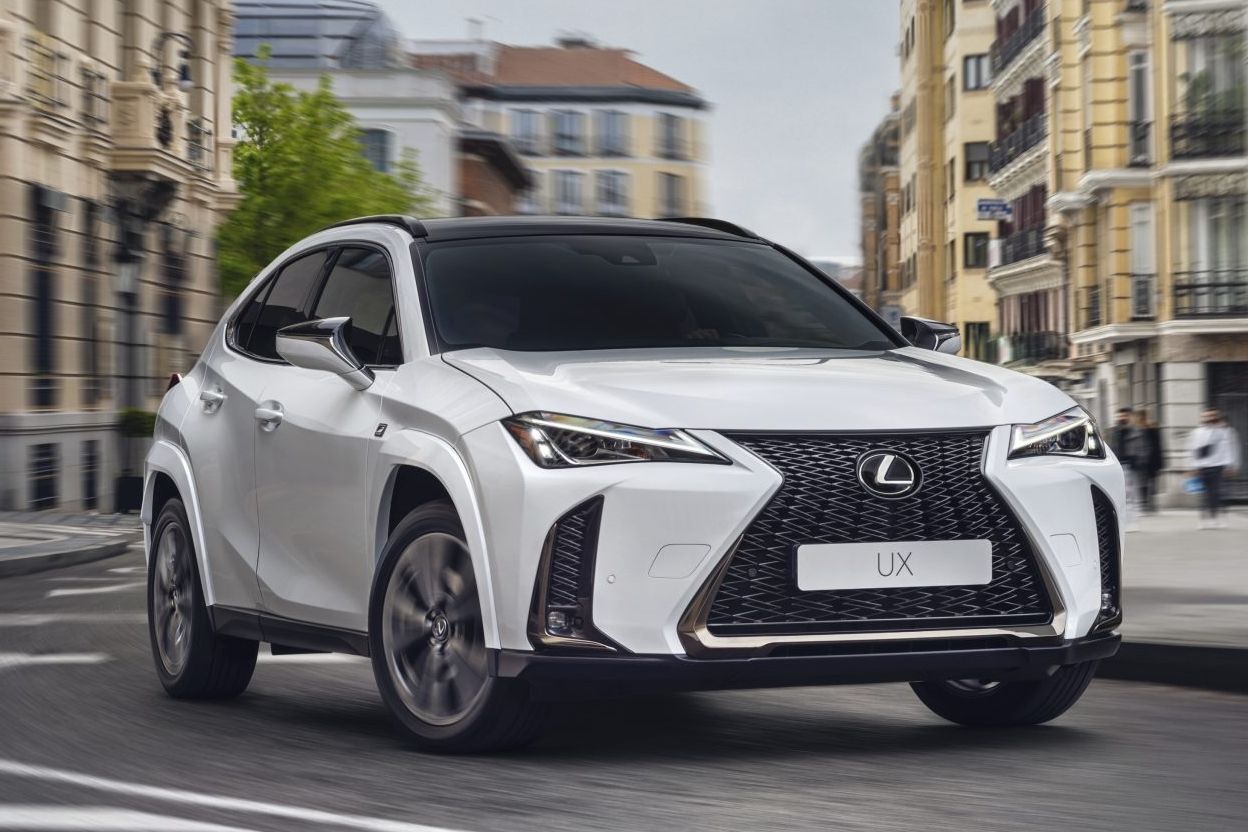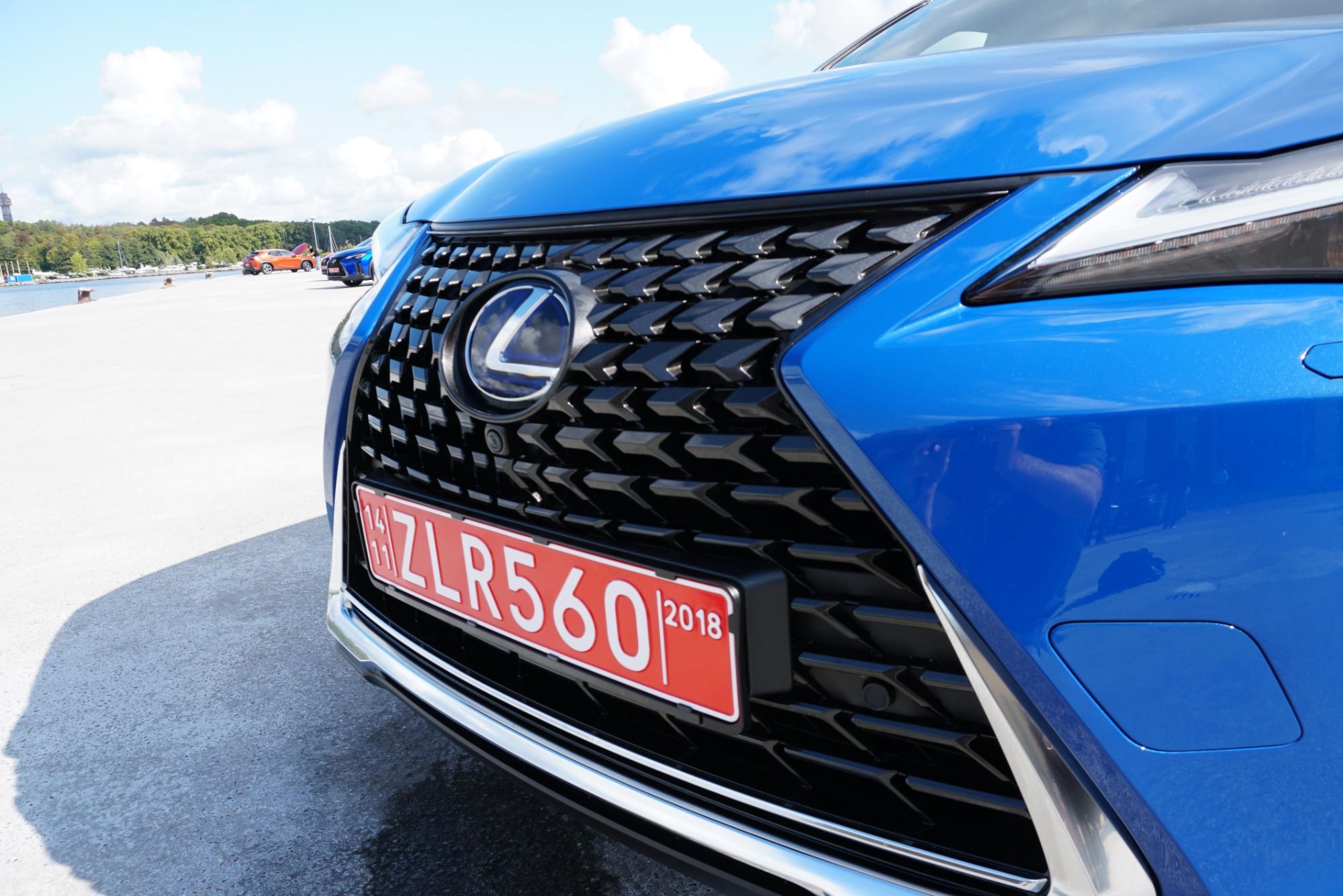2019 Lexus UX First Drive Review: The Urban Explorer
People born between 1977 and 1983 belong to a micro-generation dubbed 'Xennials,' generation-X / millennial hybrids born in an analog world that became digital as they reached the cusp of adulthood. If you remember life without mobile phones (let alone smartphones) and the internet but now can't leave home without Netflix in your pocket you are part of this exclusive group. It totals roughly 25 million in the US, and Lexus wants them all to know about its brand new model, the UX. Why? Because this is the car that Lexus hopes will attract them to the brand for the first time, and keep them there for life.
Japanese-Built, Inspired By European Design
Beautiful, quiet, well-mannered, eco-friendly. Stockholm shares many attributes with the latest addition to the Japanese carmaker's arsenal of sophisticated SUVs, which is perhaps why Sweden's capital city was selected for the car's global first drive venue. Europe is also going to be the UX's biggest market, while Chika Kako, executive vice president of Lexus International and chief engineer of the UX, was inspired by European design philosophy in creating the diminutive crossover.
The luxury subcompact SUV segment was seemingly born to cater to Xennials and as the country's fastest-growing vehicle segment today thirty-somethings looking for their first luxury vehicle have an array of options.
In the pre-drive presentation, Lexus hinted that the UX was benchmarked against the German trio of the Mercedes-Benz GLA, BMW X1/X2 and Audi Q3, but other strong alternatives include Sweden's own Volvo XC40, the Infiniti QX30, and Jaguar E-Pace. So how does the UX shape up against this stellar lineup?
The New Kid On The Luxury Subcompact SUV Block
From a pricing perspective, it's certainly competitive. Lexus has today announced the UX200 will start from $32,000 and the UX250h from $34,000. Buyers can opt for the F Sport package on both models for an additional $2,000.
On paper, its best-in-class repertoire is mighty impressive. Mpg (for non-plug-ins) at 38 mpg on the combined cycle for the hybrid model, a curb-to-curb turning radius of 34.2 feet, it's suite of standard safety features and its rating on the Articulation Index. We didn't know what that was either – apparently, it's used to determine cabin quietness, and the UX insulates occupants from bothersome exterior noises very well indeed.
That's one of the first things you notice about the Urban X-over – the quiet ride. Granted, driving through Stockholm doesn't carry the same aural assault as say downtown Manhattan, but the superior sound insulation is palpable at all speeds.
Based on the GAC global architecture platform shared by the Toyota C-HR and Corolla Hatch, Lexus applied high-strength adhesives and Laser Screw welding to give the UX a more rigid, high-strength structure. A wing-type spoiler at the rear and a flat underbody also contribute to the car's quietness, as do sound-absorbing insulating materials placed carefully throughout the body so that even the sound of water thrown by tires is reduced.
Looks Like A Crossover, Drives Like A Hatch
Another thing that strikes you about the UX is the seating position. By reducing the distance between the hip and heel points, even though the UX affords a high seating position expected of an SUV, it feels as if you're closer to the tarmac. The result is the visibility of a crossover with the driving feel of a hatch. Lexus would doubtless like me to say sporty hatch, but even in F Sport trim with the more potent hybrid setup, driving in Sport+ mode, I couldn't honestly describe the UX as a sporty drive.
"I wanted to positively overturn the image of a crossover and offer a car with nimble performance and excellent maneuverability that makes it as easy to drive as a sedan," said Chief Engineer Kako.
Key to that performance is the powerplant – a new high-efficiency 2.0-liter four-cylinder engine (M20A-FKS) rated at 169 horsepower and 151 lb-ft of torque in the UX200 delivering 33 mpg combined, and a new-generation Lexus Hybrid Drive powertrain in the UX250h that boasts 38 mpg. The hybrid system combines a slightly different gasoline four-pot (M20A-FXS) in the UX200 with two electric motors resulting in 175 hp. That's around 25 horses more than the C-HR, a significant amount in a car this size and drops 0-62 mph time from 9.2 (in the UX200) to 8.7 seconds.
With high-speed combustion tech and VVT-iE intelligent variable valve-timing, the engines offer all the poke you need around speed-restricted towns, while being highly economical. Perhaps the most important piece of kit in the UX, however, is the Direct Shift CVT (DCVT).
In this system, a mechanical gearset is used for start-off and low-speed driving, before transitioning to the CVT pulley system that – free from having to get the car rolling – boasts a wider range of gear ratios.
The 'Direct' part of the name refers to quick bursts of linear acceleration the mechanical first gear provides, which is then followed by the seamlessly smooth changes of the continuously variable transmission. It works beautifully, and for enthusiasts that like to be aware of gear changes, Lexus offers Active Sound Control (ASC) that pumps fake gearshift sounds into the cabin.
Stockholm is a unique place to drive, the city consisting of a cluster of islands with narrow roads that snake across bridges with roundabouts at every turn. The ideal testing ground for the agile UX, then. The electric power steering provides decent steering feel while the tight turning radius makes the UX extremely easy to maneuver, taking U-turns with ease and making parking a doddle. Smooth, quiet, effortless to drive, the UX absorbs a lot of the stress associated with city driving.
Handsome Exterior, Beautiful Cabin
Even in Sport Mode that sharpens throttle response, the UX is not a sporty car from behind the wheel, but it certainly looks the part with or without the F Sport package.
The signature spindle grille continues to work wonders for Lexus' identity. On the UX, it features a mesh of individual blocks that decrease in size as they radiate out from the center. Coupled with the arrowhead-shaped LEDs that sit above dual-beam LED headlights or optional ultra-small 3-projecter LED units, the UX has a purposeful look.
Unique Aero Stabilizing Blade Lights, as Lexus calls them, sit atop the rear flared fenders and are easily my favorite exterior feature. They look superb and also help to reduce turbulence and lift, stabilizing the car when cornering. 120 LEDs make up the full-width rear lights, which narrowly taper towards the center for a clean, crisp finish.
The large wheels have been pushed to the corners, framed by arch moldings that dominate the side profile. But not in a good way. I'm not a fan and think Lexus should ditch them, but they're not a deal breaker either.
A range of colors was on display in Stockholm. Cadmium Orange (below) and Nori Green (above) – my favorite colors on the UX, incidentally – were developed for the UX, while Ultra White and Sonic Blue Mica 2.0 are exclusive to the F Sport.
The top-tier package also includes chassis upgrades in the form of revised springs and stabilizer bars that tightens up the ride and more rigid 18-inch five twin-spoke alloys, but it's the visual impact of the F Sport that will tempt some 50% of buyers (according to Lexus) to invest in the package.
Exterior enhancements include an exclusive grille design that elegantly meshes together L-shaped pieces, a front bumper with LED fogs, and a revised rear bumper with jet-black trim on the moldings.
Compared to its Teutonic rivals, the UX has more attitude that should appeal to the target demographic. Is it better looking than the Toyota CH-R, though? I'm not so sure.
Step inside and there are some very special touches that will double down on this effort. The Circuit Red seats exclusive to the F Sport contrasts well with a white exterior, while the new Birch with Lapis is a nice combo.
The dash trim, inspired by traditional Japanese paper, washi, looks and feels exquisite, the steering wheel and analog clock is borrowed straight from the Lexus LS, and some of the switches in the center console are inspired by those in the LC500.
Packed With Tech Toys
Once seated in the comfortable, well-supported eight-way power adjustable seats, there's plenty that catches the eye yet the driver-focused cabin doesn't feel cluttered either. Lexus has done a fine job providing everything a 30-something would expect of a luxury car, the sweeping instrument panel boasts a seven-inch TFT LCD display and an optional 8-inch version complete with a movable meter ring that originated in the LFA. Cool but a bit unnecessary in a car like this, and with a push of a button on the steering wheel, it can moved aside, enlarging the display.
The head-up display provides all the essential info you need, making the multitude of data displayed elsewhere somewhat redundant.
With Lexus Navigation, the UX comes with a 10.25-inch screen (a 7-inch version comes standard) featuring Apple CarPlay, 4GB WiFi hotspot, Dynamic Voice recognition, as well as Amazon Alexa that allows owners to unlock the doors, check the fuel level and even start up the car all from their smartwatch. If you like being connected, the UX has you covered.
The failure that is the Lexus Remote Touch Interface is surely not long for this world, yet a new system (that's currently being explored) wasn't ready in time for the UX. Using the touchpad/cursor combo requires looking away from the road, so while front passengers can play around with it relatively painlessly, drivers that want to be safe have to pull over to enjoy the haptic vibrations. Thankfully, you have plenty of other ways to check maps, music, and other essential infotainment.
Rear seat passengers won't be especially comfortable, headroom is sufficient (36.3 in.), legroom not so much (33.1 in.). Trunk space is small but average for the segment, but with the seats folded, you can transport large items easily enough.
Safety In Mind
With eight airbags and Lexus Safety System+ 2.0 as standard, the UX is on extremely safe SUV. The Pre-Collision System includes low-light detection for pedestrians and daytime detection of bicycles, Dynamic Radar Cruise Control uses a radar on the front grille and forward-facing camera to keep a safe distance from the vehicle ahead at speeds of up to 110 mph, while other safety goodies include Lane Departure Alert, Lane Tracing Assist and Road Sign Assist.
Lexus is also debuting its Predictive Eco Drive Control on the UX250h that optimizes the charging and discharging of the hybrid battery and, in turn, fuel consumption. In tandem with the sat-nav, the system will learn driving habits, and the owner's regular routes to improve efficiency. Predictive Deceleration Support uses similar methods to recover more energy from braking, by increasing regenerative braking when it knows the driver is about to slow down or stop.
The UX also comes with Predictive State of Charge (SOC) control, optimizing conditions for regenerating energy by predicting the route the driver is taking for a distance of up to six miles. For example, the system will make sure the battery is well charged before approaching a stretch of congested traffic when the electric motor will need to be used.
If you're wondering why so much effort has been put into the UX, Lexus anticipates the crossover being its best-selling model. With sharp design, an efficient hybrid offering, and a beautifully appointed interior packed with technology and safety, the UX is a compelling offering from the Japanese carmaker. The UX200 will hit dealerships this December, with the UX250h to follow in January 2019.


